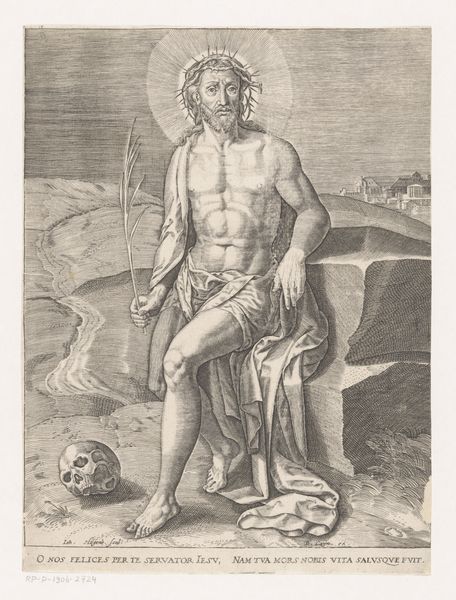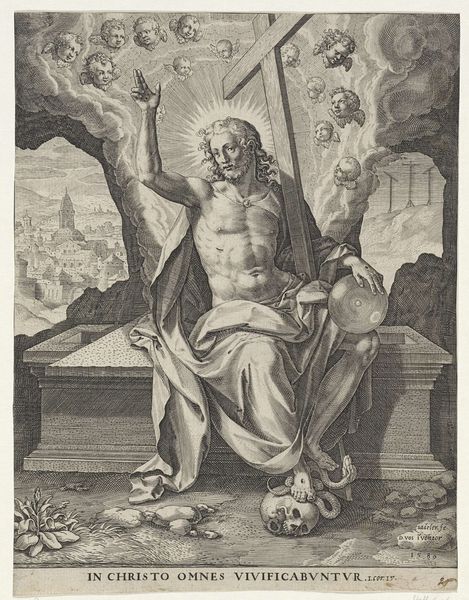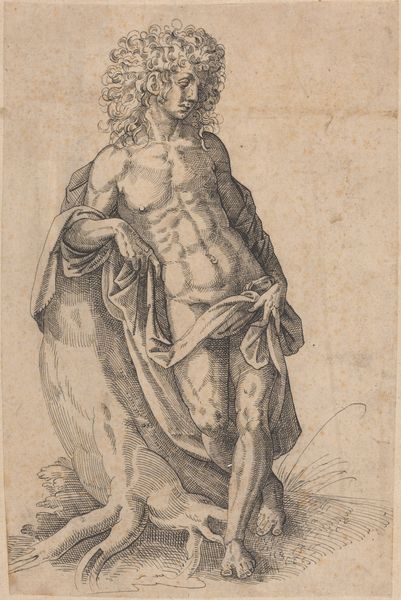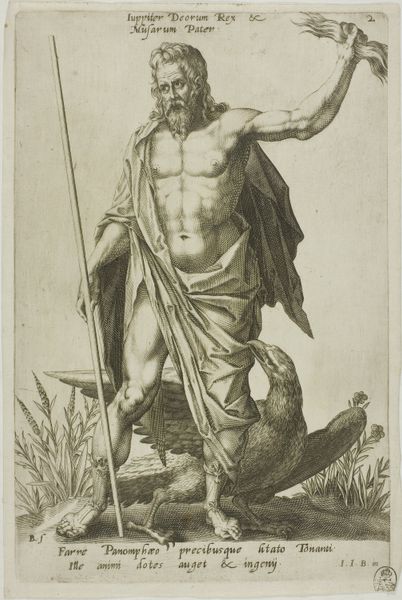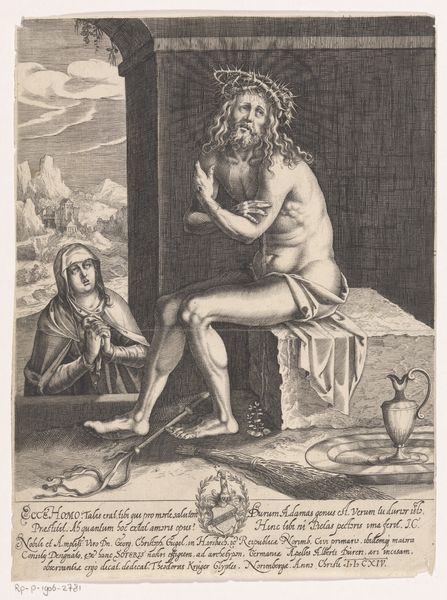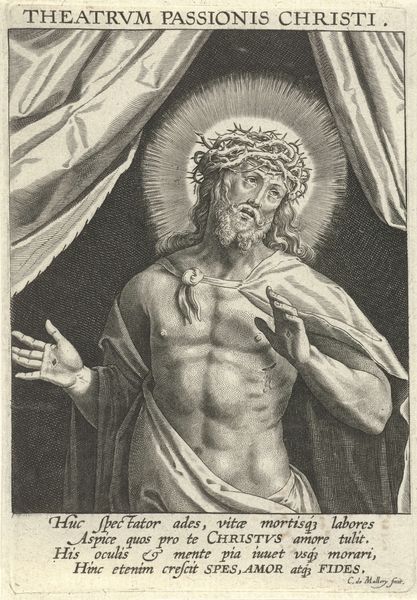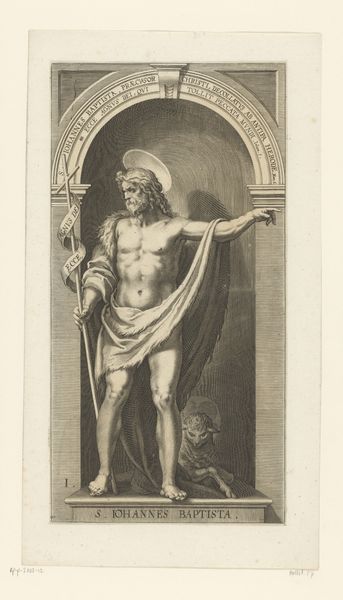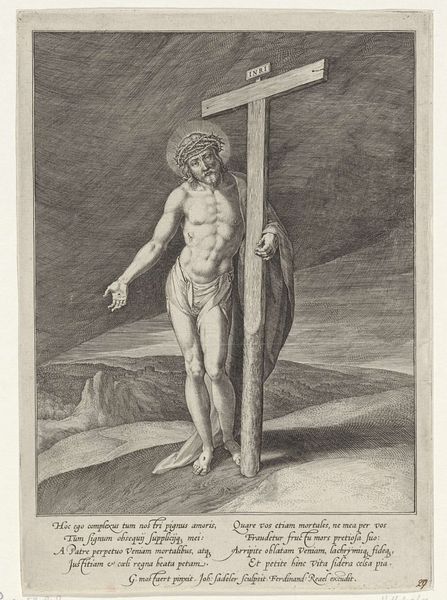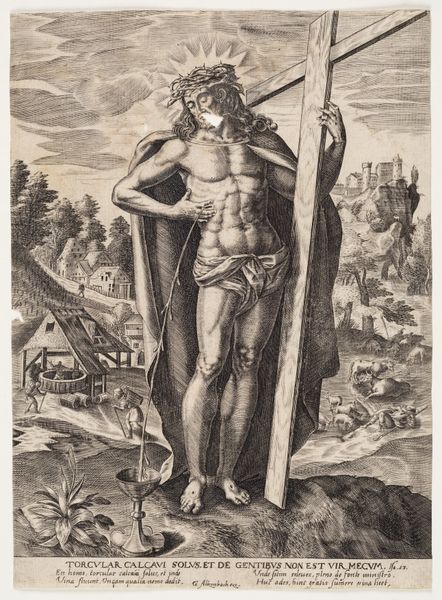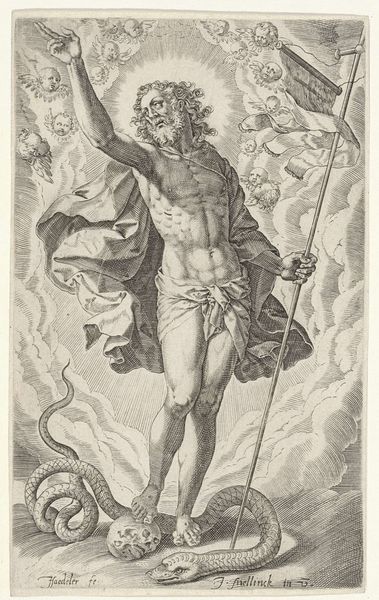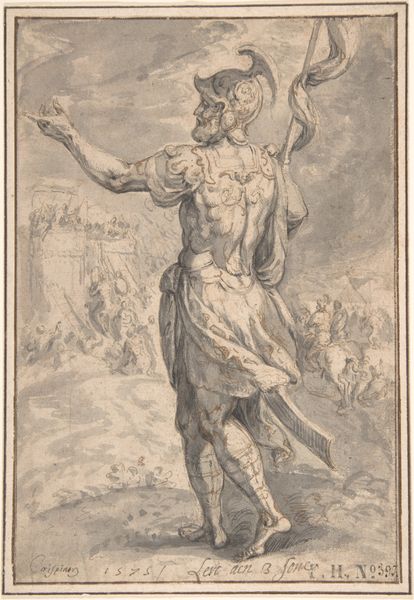
drawing, print, engraving
#
portrait
#
drawing
#
allegory
# print
#
mannerism
#
figuration
#
history-painting
#
engraving
#
christ
Dimensions: Plate: 9 1/2 × 7 1/4 in. (24.2 × 18.4 cm) Sheet: 9 11/16 × 7 3/8 in. (24.6 × 18.8 cm)
Copyright: Public Domain
Curator: This is "Christ Sitting on the Cold Stone," an engraving crafted in 1586 by Hieronymus Wierix. It now resides in the collection of the Metropolitan Museum of Art. The image immediately evokes a sense of isolated suffering, doesn't it? Editor: It does. The skull in the lower left corner is chilling. The whole composition is so stark, the musculature is overly pronounced. A symbol for his inner strength maybe? Curator: Likely so. Mannerism loved dramatic anatomy. This piece is overflowing with symbolism. Look at the palm branch in his hand – it speaks to Christ's triumph over death, while the crown of thorns and the aforementioned skull allude to sacrifice and mortality. It's a potent contrast of hope and despair. Editor: And note the landscape. On the left is something barren, rocky and on the right, on the horizon, we see a city...presumably Jerusalem, representing civilization, or perhaps spiritual aspiration. Does it fit the tradition of the "suffering servant" archetype? He is, after all, removed and alone... exiled, even within his own narrative. Curator: I believe so. The image emphasizes his isolation, a visual representation of his mental state before the cruxifiction. The engraving allows for detailed tonal modeling that enhances the figure’s palpable distress. Wierix had an exquisite facility with detail. Consider the shading— he masterfully portrays emotional intensity through very minute manipulations. Editor: That precise line work...it’s a testament to the craft. Wierix walked a very tight line by trying to inject so much artifice while still referencing the authentic. The piece becomes something more than a traditional religious depiction, maybe an almost staged performance. Curator: I can appreciate that take. Viewing Christ as an archetype rather than a devotional image alters how we engage with it today. We examine what the imagery of suffering means as opposed to simply consuming the image, doesn't it? Editor: Precisely. It serves as a reminder that we engage with these cultural images within a framework. Thinking critically about that relationship enhances the overall experience for everyone, even those most familiar with the subject.
Comments
No comments
Be the first to comment and join the conversation on the ultimate creative platform.
